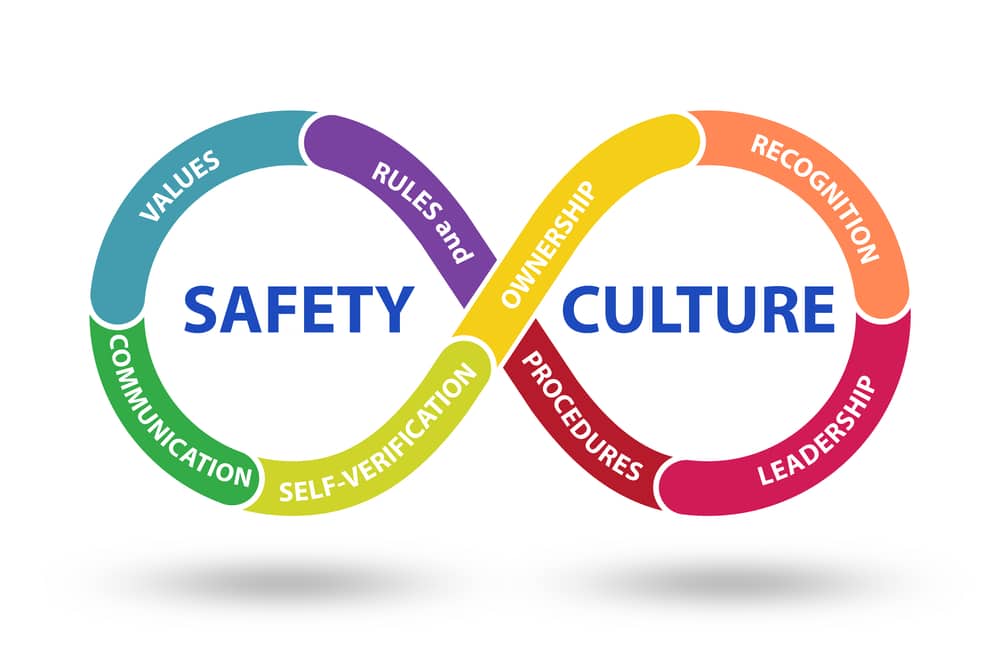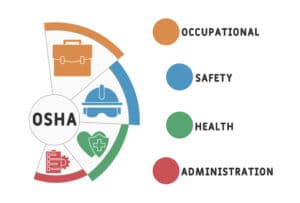Are Online Safety Classes Better Than In-Person Training?

Creating a positive safety culture in your workplace is easier said than done. First, you have “I already know all this,” followed by a quick test which reveals that even veteran employees have gaps in their knowledge.
Then you have “When will I need to know this?” Sure – there can be some very situational guidance in any course. You need to recognize this but stress that most information is critical safety training that can prevent accidents and save lives.
Can online training courses make essential health & safety information more accessible to employees? Let’s take a look at the evidence.
What is Online Safety Training?
Online safety courses teach the full curriculum of OSHA-authorized training for health and safety professionals. They cover all types of workplace safety practices and allow a workplace to become certified as OSHA-compliant in the same way as conventional, in-person OSHA training courses.
Online learning is still regarded with suspicion in many industries, but it’s fast becoming the norm for forward-thinking companies. It’s arguably more effective than in-person training for several reasons:
- Staff can learn at their own pace. Ever phased out for 30 seconds in a seminar and found that you’ve missed the key point? Video courses can be rewound so that nothing gets missed.
- Automated tests at the end check learning outcomes. A video never goes off-script or misses a section. The point is to ensure that employees know how to abide by OSHA standards. Tests can be scripted to suit the exact format of the video.
- No need for soft skills. Videos are led by subject-matter experts and are delivered via a screen – seem impersonal? This can be an advantage. Workers in many industries (e.g. construction) enjoy nothing less than being told it’s a “classroom day”. They feel they’ll be sat down and told how to do their job by someone who smiles too much and appears to have never been on a construction site. The video is simply instructional – it’s not trying to be their friend.
You don’t even need an internet connection for most video learning resources – they can be downloaded. Your workforce can complete their occupational safety training at its own pace at a suitable time.
How Can I Learn About Workplace Safety?
Safety and health are mandatory requirements in any industry. You need certification from the Occupational Safety & Health Administration (OSHA) to monitor and improve safety and health practices in your workplace. This enables you to provide resources to train your workforce and offer continuing education to your team.
Can you do a health and safety course online?
Yes – there are many great courses available for almost every industry. Employers can find resources online and work with providers to manage the best materials for their business. The number of safety-related online courses has grown over the years, and almost any employee training topic can be found. Most companies seem to be transitioning from classroom-style instruction to an online training model, and that trend is expected to accelerate in the future.
Is online safety training effective?
Little peer-reviewed research has been done into how effective online health training can be. However, a recent study found positive results compared to conventional H&S industry courses. Online safety courses can definitely play a role in any business’s employee safety program. As long as OSHA Standards are being followed, an online or computer-based training strategy is very effective.

What does OSHA say about online training?
OSHA approves of online education resources by the same criteria it evaluates in-person services. Many popular courses comply with OSHA training requirements – you can find out more about the association’s standards on the OSHA website if you’re interested. OSHA training can be accomplished through either an in-person program or, an online or internet-based platform.
How do you conduct safety training in the workplace?
Employees can access safety training videos at a time that suits them. You can also create a bespoke training plan for each staff member rather than lumping training into a one-size-fits-all seminar for the whole team.
As long as workers complete training with a thorough understanding of the learning outcomes and the material is OSHA-approved, the only question is the learning method. Video learning is a great way to keep training up-to-date and supplement employees’ knowledge wherever necessary (e.g., if an employee has to train in first aid).
What is the Best Safety Course?
The best online courses use OSHA training guidelines. As the person in charge of these services at your company, you’ll need to follow OSHA guidelines for health and safety training.
Choosing which safety course is best
Choosing a course depends on its suitability for your work environment. There are excellent training resources available for almost all industries and environments. A major advantage of having employees complete training online is that they can work through the material at their convenience – even on a mobile device.
Is it worth getting OSHA-certified?
Individual workers don’t become “OSHA-certified”. OSHA awards certification to health and safety professionals as a type of accreditation that lets them take responsibility for safety training in the workplace. It’s essential if you want to manage online training courses in your workplace.
If you’ve moved to the U.S. from another country, you might have accreditation from a comparable international association. You can contact OSHA to find out if your previous qualifications make you eligible to provide online training for employees in the U.S. and what extra accreditation you might need.
What is a DOL card?
A DOL (Department of Labor) card signifies that you’ve completed an OSHA 10 hour or 30 hour program. Benefits include the ability to provide safety services to a company and manage offline or online training programs.
Online Courses vs. In-Person Training: Head to Head:
Advantages of Online Learning
- Can be done at employees’ leisure
- Course taught by industry experts
- Not all employees are interested in “classroom days.”
- OSHA-compliant
- Easy to test for knowledge
- Affordable
- Often available in multiple languages
Advantages of In-Person Learning
- OSHA-compliant
- Traditional method
- Students may be able to focus better (less distractions)
Verdict
There are so many reasons to switch to online safety training vs. conventional education methods. Staff engagement is often higher, and most importantly, it may promise better learning outcomes – these are what will protect your workers and your company from hazards.
Finding the Best Online Safety Classes
If you’re interested in OSHA-approved safety video courses across a huge range of subjects, browse our library today and see how much you can accomplish. Save yourself time, improve engagement with your team, and protect your company with top-quality online safety training courses. We have a large selection of safety training courses that will meet your needs.